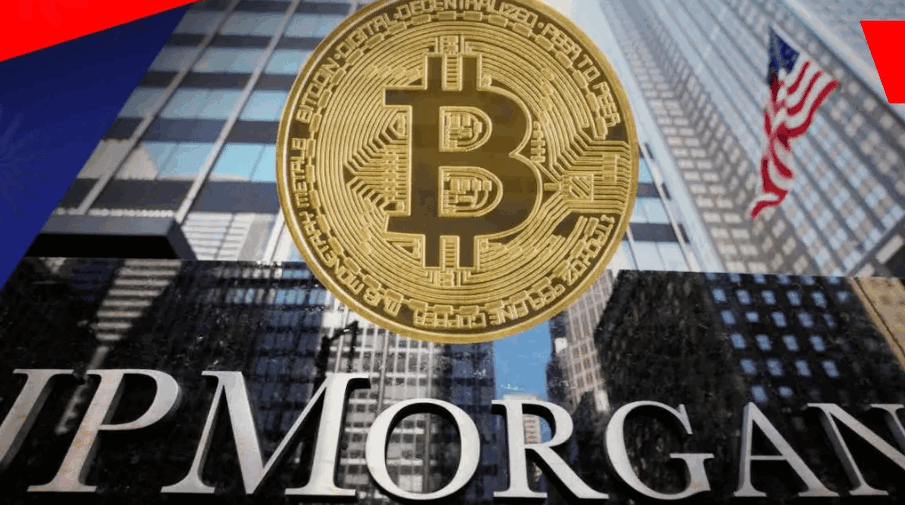JPMorgan, once a vocal critic of cryptocurrencies, is reportedly preparing to launch crypto-backed loans using assets like Bitcoin and Ethereum as collateral. This move marks a significant shift in traditional banking, signaling a growing integration between legacy finance and the crypto economy.

From Crypto Skepticism to Strategic Integration
For years, the name Jamie Dimon—CEO of JPMorgan Chase, the largest bank in the United States—was synonymous with crypto skepticism. He once dismissed Bitcoin as a “fraud” and a tool for criminals and speculators. But now, in a dramatic reversal that’s sending shockwaves through global finance, JPMorgan is reportedly preparing to launch crypto-backed loans as early as 2026, according to the Financial Times.
If confirmed, this move would redraw the boundary between traditional banking and the crypto economy. The mechanism is technically simple: customers post digital assets like Bitcoin or Ethereum as collateral in exchange for fiat liquidity. But the implications are profound.
How Crypto-Backed Loans Work
Technically, the model is straightforward yet disruptive:
- Clients deposit digital assets as collateral
- They receive fiat currency (e.g., U.S. dollars) in return
- If asset value drops below a certain threshold, the bank liquidates the collateral to limit risk exposure
This mechanism is well established in decentralized finance, but no major global bank has embraced it—until now. That JPMorgan, of all institutions, would take this step gives the move deep symbolic weight.
JPMorgan’s Quiet Embrace of Blockchain
JPMorgan is no stranger to blockchain innovation:
- In 2019, it launched JPM Coin, a stablecoin for interbank payments
- It developed Onyx, a blockchain platform for institutional applications
- It provides crypto-related services to select professional clients
But retail-facing crypto-backed loans would mark a turning point—a shift from sandbox experiments to large-scale productization. Sources say such offerings could attract billions of dollars in new capital and further entrench crypto assets as trusted collateral in mainstream finance.
Pressure from Wall Street Rivals
JPMorgan’s pivot is not purely ideological—it’s strategic. Cantor Fitzgerald, led by current U.S. Commerce Secretary Howard Lutnick, has already rolled out similar crypto-backed loan products. Competitors like Bank of America and Citibank are developing their own stablecoins and advocating for clearer federal regulations.
As institutional demand grows and U.S.–EU regulatory frameworks mature, embracing digital assets is becoming a strategic necessity rather than a philosophical debate.
Regulatory Headwinds: Basel III and Custody Risks
Despite the momentum, regulatory hurdles remain steep.
Under Basel III, crypto assets are classified as high-risk. Unsecured exposures carry a 1,250% risk weight, meaning banks must hold one dollar in capital for every dollar loaned against crypto collateral.
JPMorgan cannot hold these assets directly on its balance sheet. It must partner with regulated custodians such as Coinbase or Fidelity Digital Assets, ensuring compliance with AML (anti-money laundering) and KYC (know your customer) obligations.
From Belief to Realism: Dimon’s New Tone
Jamie Dimon has not become a crypto believer—but he has become a realist. He recently reaffirmed, “I’m not a fan of Bitcoin,” but also acknowledged that clients will be allowed to buy it, even if JPMorgan won’t custody the assets itself.
This shift reflects a broader trend: crypto doesn’t need to be loved to be adopted. What matters is its market relevance—and that is now undeniable.
A Hybrid Financial Future
What’s unfolding isn’t just an expansion of banking services—it’s the dawn of a hybrid financial architecture, where digital and traditional assets coexist, often under the same institutional roof.
JPMorgan isn’t converting to crypto ideology, but it is adapting to digital economic realities. Crypto clients are real, digital capital is real, and the emerging financial system needs tools that reflect this new landscape.
This is a reckoning between two once-opposing worlds—now blending, inevitably. As one of the most conservative financial institutions leads this transition, it signals not a revolution, but a structural evolution—one that is already underway and impossible to reverse.












